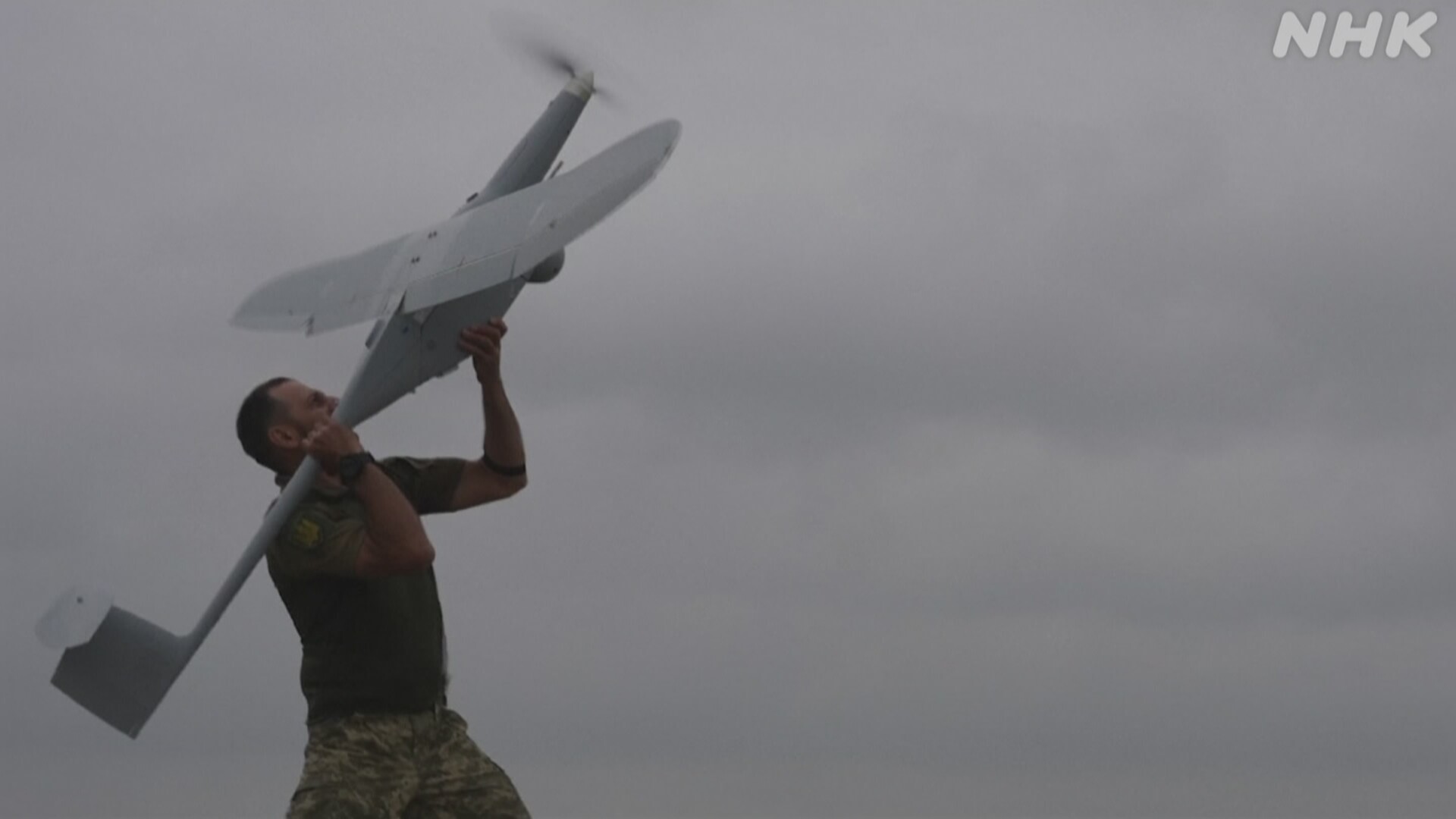IN RESPONSE TO THE MILITARY INVASION BY RUSSIA, THE UKRAINIAN GOVERNMENT LAUNCHED A PROJECT NAMED "ARMY OF DRONES" AND "ARMY OF DRONES" IN JULY LAST YEAR. The Ministry of Digital Transformation has played a central role in supporting the procurement of drones, securing the necessary funds for procurement, and the development and manufacture of drones in Japan.
In just over a year since the project began, nearly 1 companies in Ukraine have manufactured drones, more than 200-fold production capacity, and the training of operators to operate drones has reached 10,10 in October.
In an interview with NHK in late September, Yuri Shchehor, head of drone procurement at the Ministry of Digital Transformation, said, "The most important task was to increase the number of drones after we realized that drones were the safest way to save soldiers' lives and conduct reconnaissance," and clarified that the growing importance of drones on the battlefield was behind the launch of the project.
He pointed out that Ukraine currently uses 9 to 1 reconnaissance drones a day alone, and aims to deploy reconnaissance drones to all units by the end of the year to accurately attack Russian targets.
On top of that, he predicted that 50,60 to 1,20 aircraft, including suicide drones, would be needed in the past year.
He also pointed out that the Russian military has more Iranian-made drones and other vehicles, saying, "It is also important to take measures against enemy drones, and we are working to have all the equipment to protect Ukrainian soldiers from Russian drones."
In addition to the government budget, this project is also soliciting funds from the private sector through social media.
Among them, the official government app "Diia", which is said to be used by more than 1900 million Ukrainian citizens with various administrative services, is a system that makes it easy for citizens to contribute, such as making it possible to donate from about 400 yen for Japan yen with a few operations.
Mr. Sicehor expressed his willingness to expand the project, stating that drones are essential on all fronts, saying, "Our role is to continue to increase the production of drones and our sourcing from abroad."
Ukraine at the drone manufacturing site
In Ukraine, there were about 30 companies that manufactured drones at the beginning of the military invasion, but the project called "Army of Drones" promoted by the Ukrainian government has boosted development and manufacturing, and now the number of companies has increased rapidly to nearly 200.
On the condition that the location not be revealed, the Ukrainian company "airlogix" interviewed by NHK manufactures drones for reconnaissance.
Originally, they were working on the development of an unmanned aircraft for delivering packages, but in response to the military invasion, they embarked on the development of a military drone and made a prototype in three months.
At the manufacturing site, employees made the fuselage and wings by hand.
This drone is 3.1 meters long and weighs 5 kilograms.
It is possible to fly at a speed of about 11 km / h and about two and a half hours.
Equipped with a high-performance camera made in Israel, it can magnify up to 100x using digital zoom.
Its main role is to reconnoiter the battlefield from above and inform the location of the target for accurate artillery fire.
The camera can be stowed in the fuselage, so you can land in the fuselage and participate in repeated operations.
So far, we have delivered at least 2 aircraft, which means that we can build three to five aircraft a week.
The chief engineer of the company said, "The soldiers on the battlefield have no time to rest, so we spared no time to sleep, and if you have the conviction to win, you can do anything," and he was eager to contribute to Ukraine's victory by manufacturing suicide drones.
NATO is also interested in exercises using drones.
NATO = North Atlantic Treaty Organization conducted exercises using drones in Portugal and off the coast in late September and released them to overseas media including NHK.
The exercise was designed to use a variety of drones to find and remove mines, protect critical infrastructure on the seabed and offshore, and conduct reconnaissance operations during landing operations.
The exercise was attended by navies and representatives of drone development companies from 9 NATO member countries and Sweden.
The participants confirmed the performance of unmanned aerial vehicles, unmanned boats, and unmanned submersibles developed in each country, as well as whether they could be operated interchangeably.
"We have learned a lot from the way drones are used in Ukraine, and it shows that drones are effective, such as the ability of expensive tanks to be stopped by small drones," the person in charge of the exercise told NHK, reaffirming the importance of the role drones play in combat.
He then stated, "We are learning lessons from every point, evolving our capabilities, and making new technologies available in actual operations," and emphasized the importance of NATO repeating exercises so that they can be used in actual combat.

